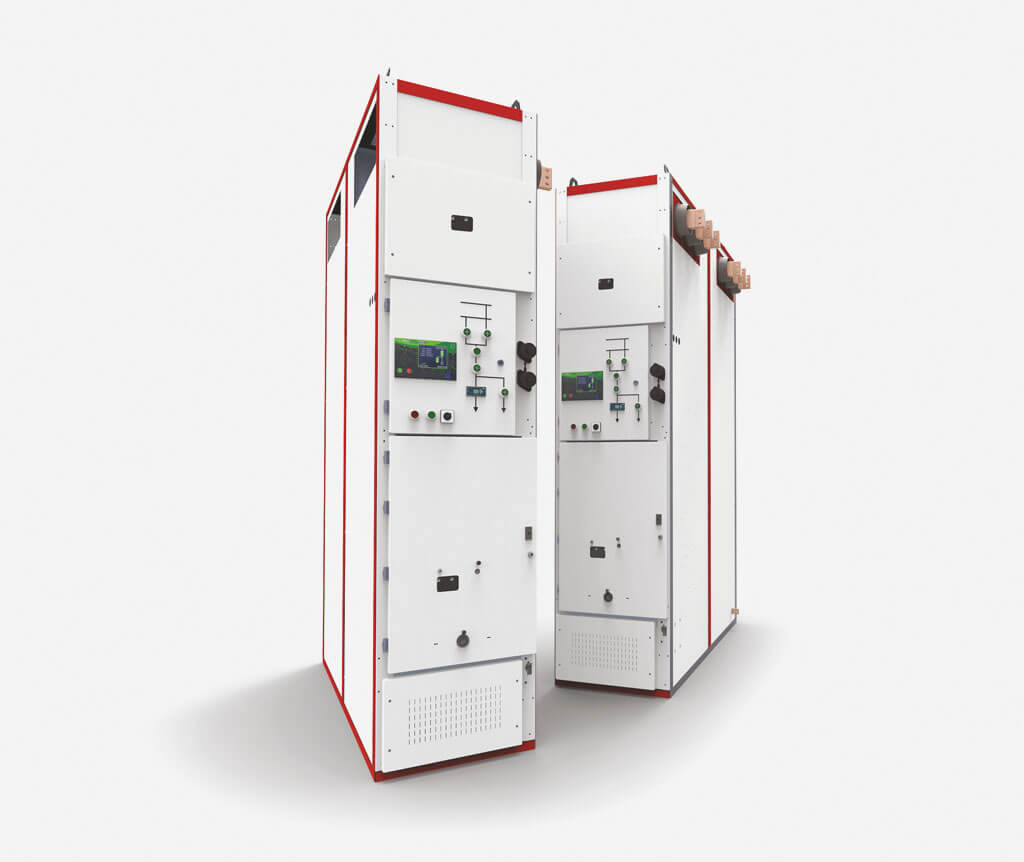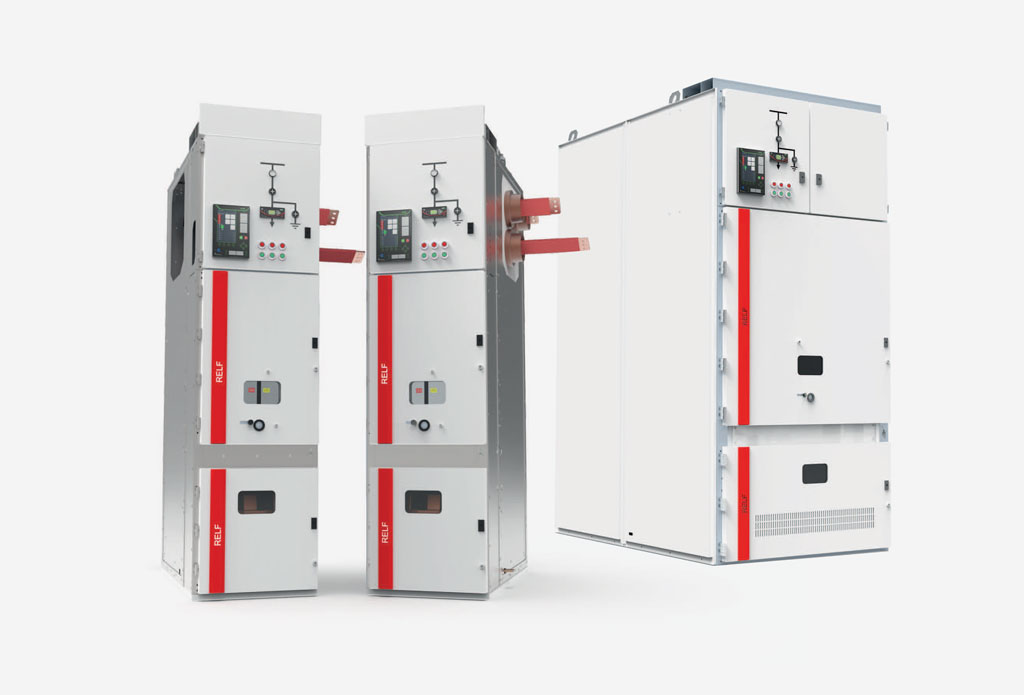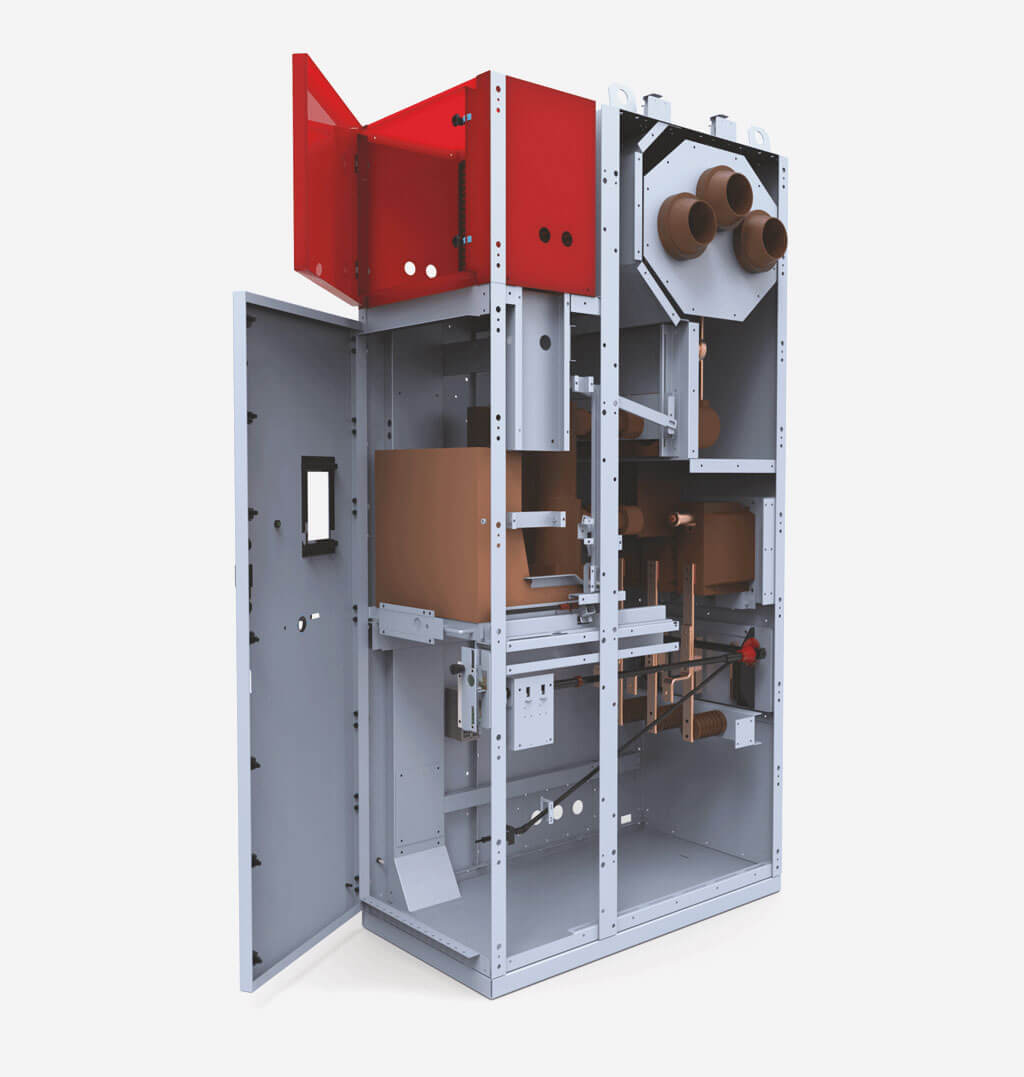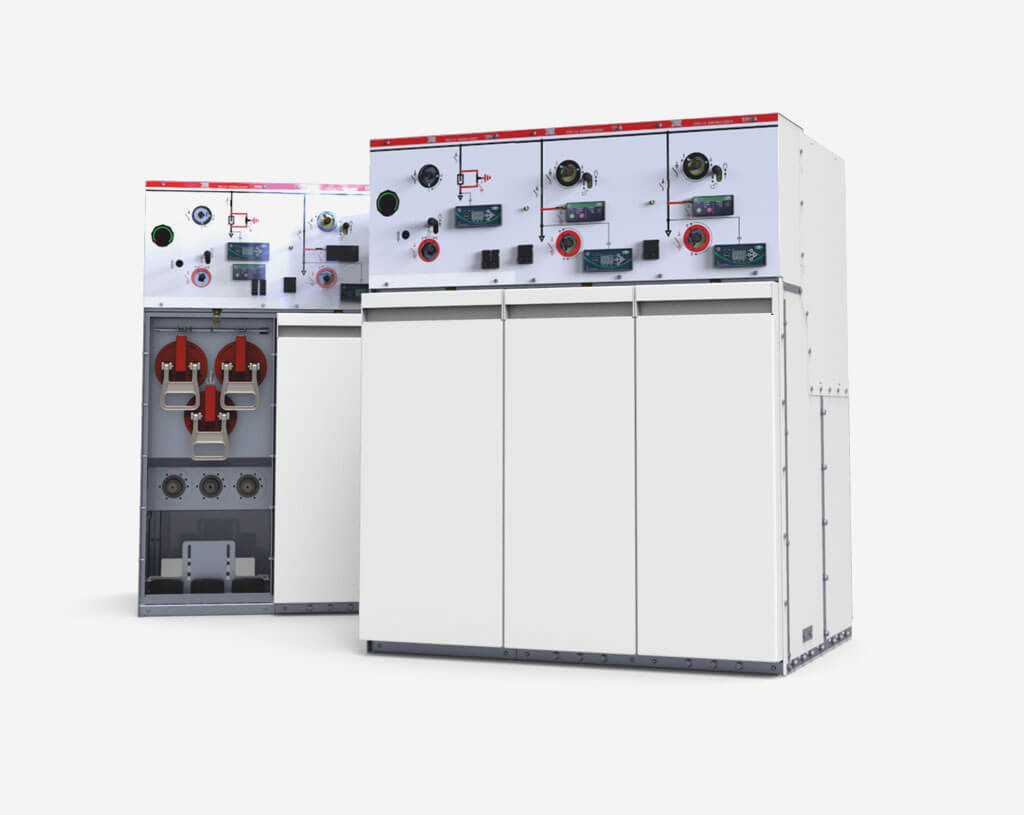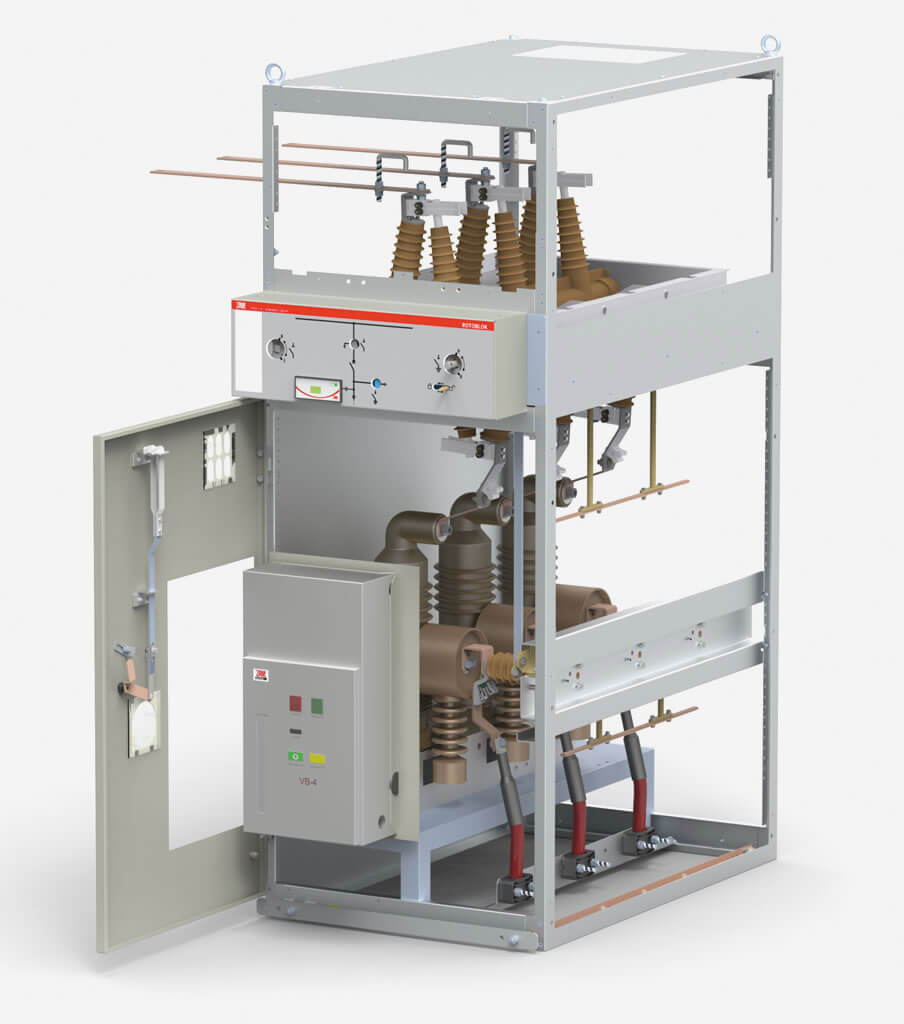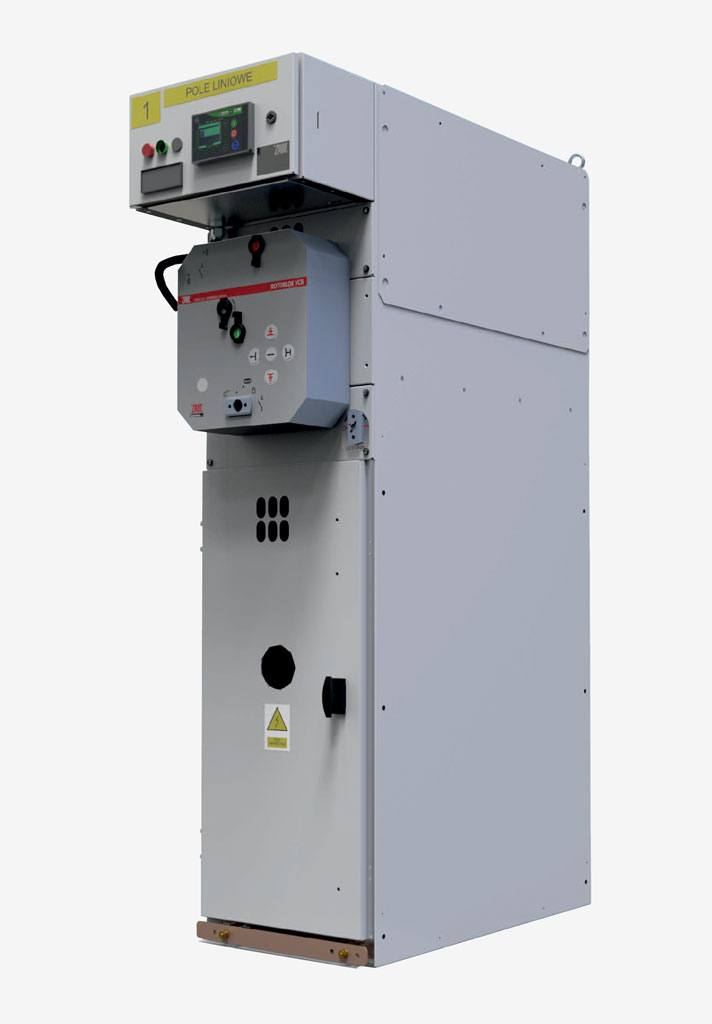What is a switchgear?
Switchgear is a group of electric power equipment that serves as a set of distribution, protection, measurement, and control.It also includes other equipment, all placed in a special enclosure. In addition to these devices, inside the enclosure there are, for example, busbars, electrical connections, insulating elements, and covers. The main task of such a structure is the distribution of electricity, as well as the connection and protection of electrical circuit lines. One type of switchgear is medium-voltage switchgear.
Characteristics of MV switchgears
MV switchgear, or medium-voltage switchgear, is equipment whose rated voltage, according to IEC 62271-200, is from 1 kV to 52 kV. However, in practice, the most common voltage ratings are 7.2 kV, 12 kV, 17.5 kV, 24 kV, and 36 kV. Medium-voltage switchgears are designed for the transmission and distribution of electricity, as well as power supply and protection of electrical equipment from the effects of short circuits and overloads. Medium-voltage switchgears also have the task of supplying low-voltage networks through MV/nN transformers. Medium voltage can also be used directly to supply power to high-power electrical machinery, as well as railroad catenary lines.
Rated parameters of medium-voltage switchgears
The basic rating parameters of MV switchgears include:
- Ur [kV] – rated voltage,
- Ir [A] – rated continuous current,
- Ik (1s or 3s) [kA/s] – rated short-circuit withstand current,
- Ip [kA] – 2.5x Ik for 50Hz network frequency - rated peak current withstanding,
- IA [kA/s] – resistance to internal arc,
- IAC class (Internal Arc Classification) - short-circuit resistance of enclosure sides [AF; AFL; AFLR], F- front, L-sides, R-back,
- - IP / IK degree of protection:
- IP – protection against solid objects and water ingress,
- IK – protection against mechanical impact,
- LSC (Loss of Service Continuity) category, [LSC1; LSC2; LSC2A; LSC2B],
- Partition class [PM, PI]:
- PM – metal partitions,
- PI – insulating partitions.
The parameters of MV switchgears are selected in accordance with PN-EN IEC 62271-200:2022-02 "High-voltage switchgear and controlgear. Part 200: A.C. switchgear in metal sheaths for rated voltages above 1 kV up to and including 52 kV".
Types of bays of medium-voltage switchgears
Medium-voltage switchgear consists of different types of bays (current paths designed to perform specific tasks). The distinctions include:
- Line bays - connecting power lines to busbars,
- Breaker bays - connecting and protecting lines, networks, transformers, etc.
- Transformer bays - connecting transformer windings to busbars,
- Measuring bays - containing a disconnector, protection, and voltage transformers (optionally, also current transformers),
- Lightning protection bays - used to protect against the effects of lightning.
Depending on the needs, the bays can be used in many different combinations.
Types of MV switchgear and examples
ZPUE offers a wide range of safe, reliable, and optimized switchgear. ZPUE medium-voltage switchgear can be used for primary and secondary power distribution and is made in different insulation, design, etc.
Energy distribution
Medium-voltage switchgear can be divided into the following categories by energy distribution:
- Primary energy distribution,
- Secondary energy distribution.
Primary power distribution switchgears are fed from the power system after the HV/SN transformer in GPZ stations. They find their application in electrical distribution stations that generate, transmit, and use electricity. Examples of such switchgear: RELF, RELF 2S, RXD.
Secondary energy distribution switchgears are fed from primary distribution switchgears: from GPZs, they work in distribution networks. Examples include: TPM, Rotoblok, Rotoblok SF, Rotoblok VCB.
Type of insulation used
These are the following types of MV switchgear insulation:
- Air, AIS (Air Insulated Switchgear),
- Gas, GIS (Gas Insulated Switchgear).
Air-insulated switchgears are those in which atmospheric air acts as insulation between live active components.
Gas-insulated switchgears are those in which this insulation is provided by an insulating gas other than atmospheric air.
The most commonly used gas in gas-insulated switchgear is SF6 gas (sulfur hexafluoride). The very good insulating properties of sulfur hexafluoride compared to air mean that its use can reduce the area occupied by the switchgear by a factor of two.
Construction
Taking into account their structure, MV switchgears can be divided into two categories:
- Modular,
- Compact.
In modular switchgears, each functional bay (power supply, coupling, measurement, etc.) is located in a separate enclosure. These enclosures are juxtaposed with each other to form a sequence simply called switchgear. Examples of such switchboards are: RELF, RELF 2S, RXD, Rotoblok Group, TPM (expandable design).
Compact switchgears are usually gas switchgears. Here, all functional bays and all apparatus of these bays are enclosed in a single housing. Most often, the housing of all switchgear connectors is a hermetic tank filled with insulating gas. These are usually ring switchgear - RMU (Ring Main Unit). Example: TPM.
Busbar system
In this category, we distinguish the following types of switchboards:
- Single-system,
- Dual-system.
Single-system MV switchgears have a single busbar system. Examples of such switchgear: RELF, RXD, Grupa Rotoblok, TPM.
A dual-system switchgear, on the other hand, comes with a double busbar system. In ZPUE, this condition is met by the RELF 2S medium-voltage switchgear.
Distinguishing features of ZPUE switchgears
Common features of all our MV switchgears:
- High operating safety,
- High technical parameters,
- Ability to operate in all MV network systems,
- Flexibility: ability to be equipped with a wide range of apparatus,
- Modular design that allows you to easily expand existing and design new sets,
- Long service life compliance with IEC standards.
For the sake of operator safety and the possibility of long, trouble-free operation, MV switchgears are equipped with a system of interlocks and shock protection measures as standard. The durability of our switchgears is ensured by robust metal enclosures made in accordance with the requirements of the PN EN 62271-200 standard, whose expected service life under normal operating conditions, indoors, is at least 30 years. The safety of our products is confirmed by the type tests performed on independent accredited testing units.
It is worth noting that ZPUE S.A. provides comprehensive solutions, from switchgear design to manufacture. Each supplied switchgear is properly tailored to the customer's needs. This is what makes us stand out in the market. All switchgears produced by ZPUE S.A., thanks to well thought-out solutions, are adapted to cooperate with all available SCADA systems.

